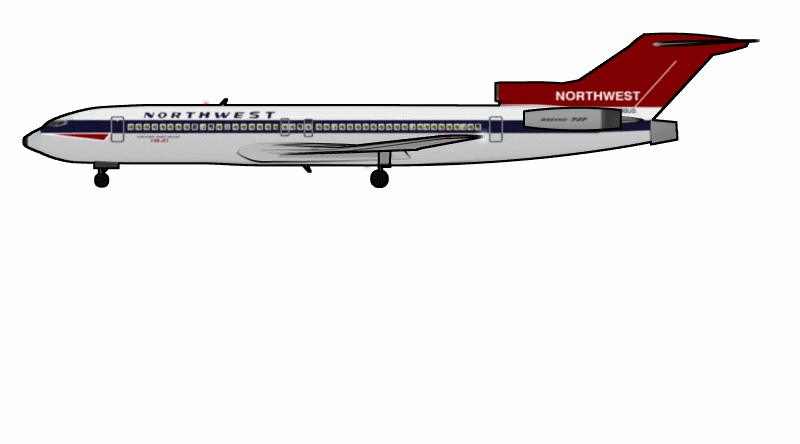
Cooper vane
Encyclopedia

Wedge
Wedge may refer to:Mathematics:* Triangular prism, a parallel triangle wedge* Wedge , a polyhedral solid defined by two triangles and three trapezoid faces* Wedge product, a mathematical term, named for the ∧ operator symbol used...
that prevents the ventral airstair
Airstair
An airstair is a passenger staircase that is built in to an airliner — often, though not always, on the inside of a clamshell-style door. The stairs can be raised or lowered while the aircraft is on the ground, allowing passengers and ground personnel to board or depart the aircraft without the...
of an aircraft from being lowered in flight. Following three hijackings
Aircraft hijacking
Aircraft hijacking is the unlawful seizure of an aircraft by an individual or a group. In most cases, the pilot is forced to fly according to the orders of the hijackers. Occasionally, however, the hijackers have flown the aircraft themselves, such as the September 11 attacks of 2001...
in 1972, the Federal Aviation Administration
Federal Aviation Administration
The Federal Aviation Administration is the national aviation authority of the United States. An agency of the United States Department of Transportation, it has authority to regulate and oversee all aspects of civil aviation in the U.S...
ordered that Boeing 727
Boeing 727
The Boeing 727 is a mid-size, narrow-body, three-engine, T-tailed commercial jet airliner, manufactured by Boeing. The Boeing 727 first flew in 1963, and for over a decade more were built per year than any other jet airliner. When production ended in 1984 a total of 1,832 aircraft had been produced...
aircraft be fitted with Cooper vanes. The device was named for famed airplane hijacker D. B. Cooper
D. B. Cooper
D. B. Cooper is the name popularly used to refer to an unidentified man who hijacked a Boeing 727 aircraft in the airspace between Portland, Oregon and Seattle, Washington on November 24, 1971. He extorted $200,000 in ransom and parachuted to an uncertain fate...
, who used the rear stairway to exit a Boeing 727 in flight and make his escape via parachute
Parachute
A parachute is a device used to slow the motion of an object through an atmosphere by creating drag, or in the case of ram-air parachutes, aerodynamic lift. Parachutes are usually made out of light, strong cloth, originally silk, now most commonly nylon...
.
The Cooper vane is a very simple device consisting of a spring-loaded paddle connected to a plate. When the aircraft is on the ramp
Airport ramp
The airport ramp or apron is part of an airport. It is usually the area where aircraft are parked, unloaded or loaded, refueled or boarded. Although the use of the apron is covered by regulations, such as lighting on vehicles, it is typically more accessible to users than the runway or taxiway...
, the spring keeps the paddle perpendicular to the fuselage
Fuselage
The fuselage is an aircraft's main body section that holds crew and passengers or cargo. In single-engine aircraft it will usually contain an engine, although in some amphibious aircraft the single engine is mounted on a pylon attached to the fuselage which in turn is used as a floating hull...
, and the attached plate does not block the stairway. As the aircraft takes off, the airflow pushes the paddle parallel to the fuselage and the plate is moved underneath the stairway, preventing it from being lowered. Once the airflow decreases on landing, the spring-loaded paddle returns to its initial position, thereby allowing the stairs to be lowered again. Although this device was intended to prevent hijackings aboard the 727 and other aircraft with a ventral airstair, many airlines sealed the airstair entirely, never to use it again.

